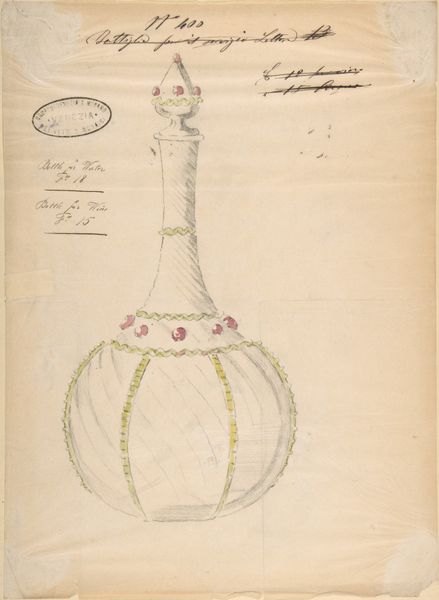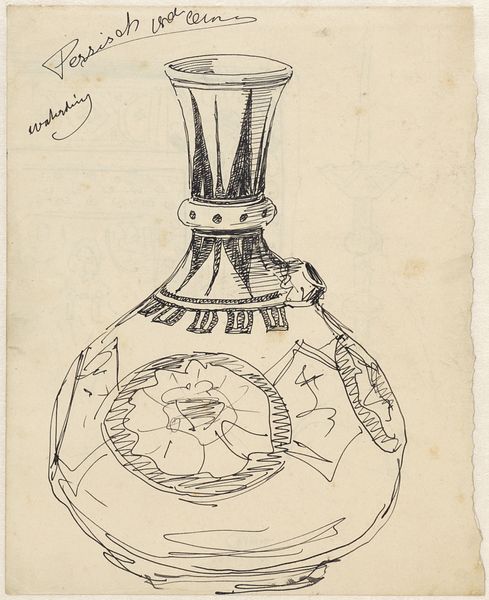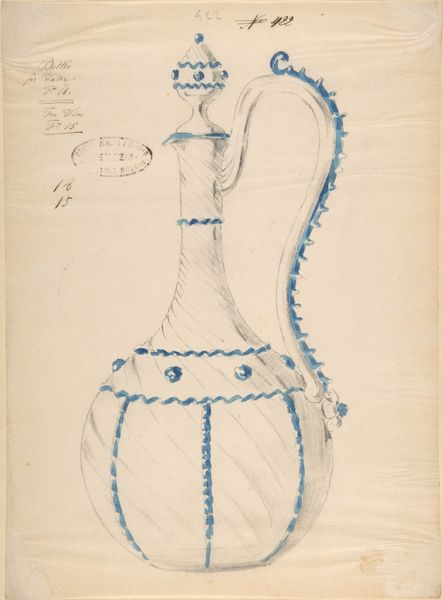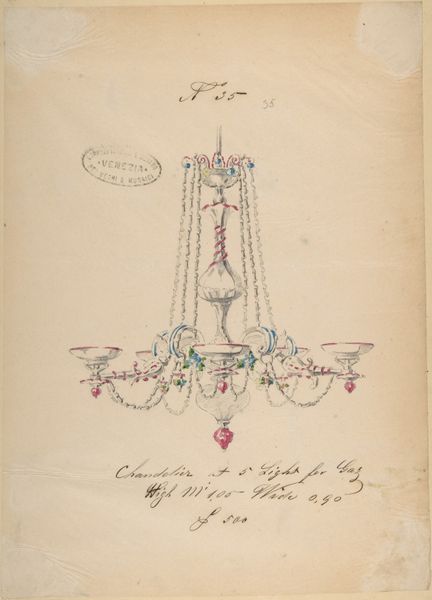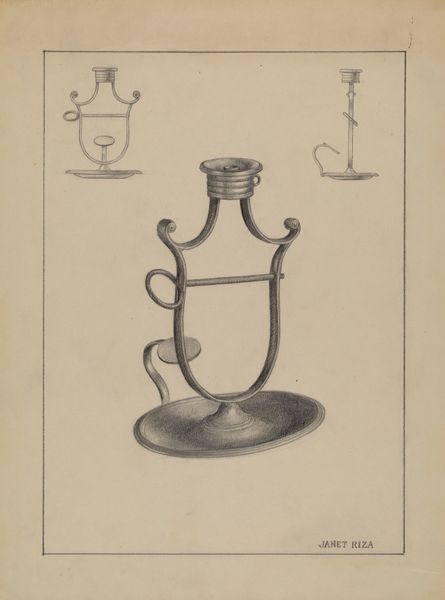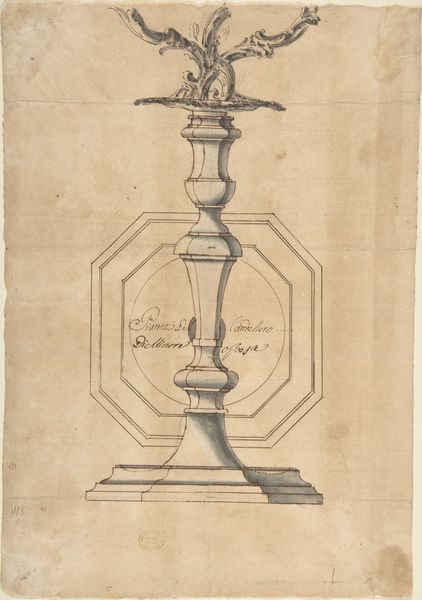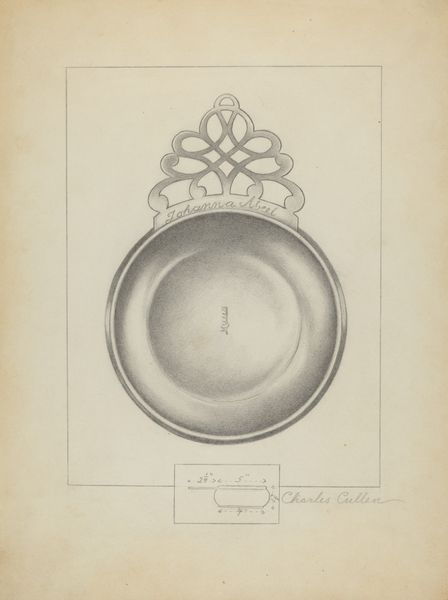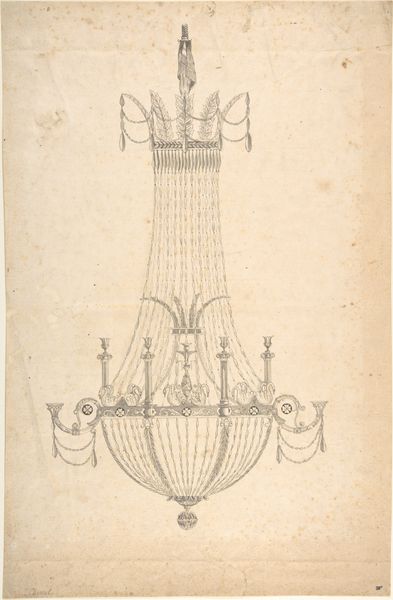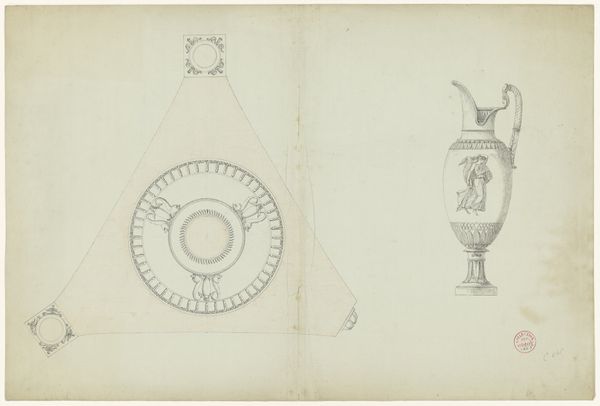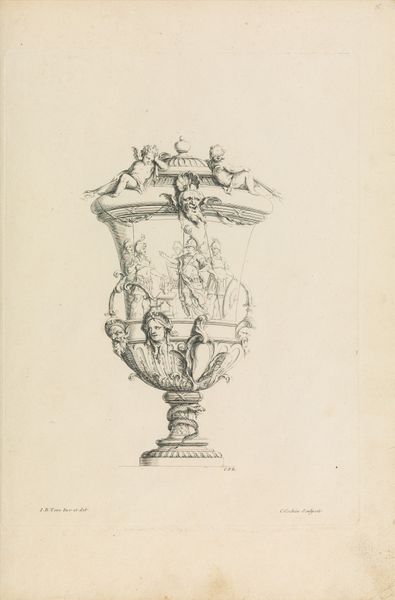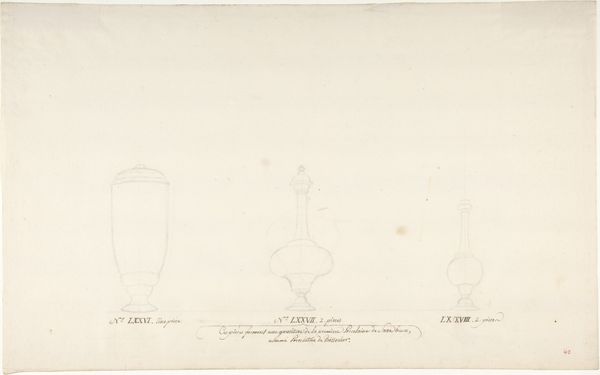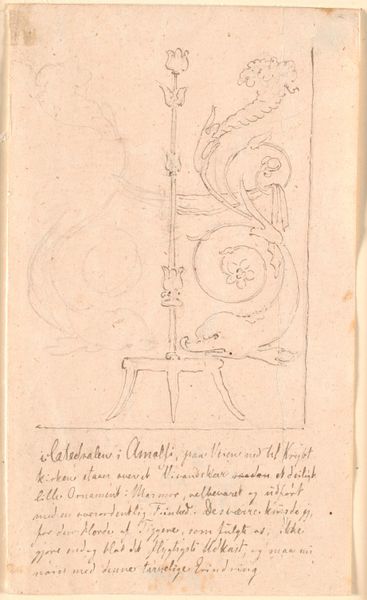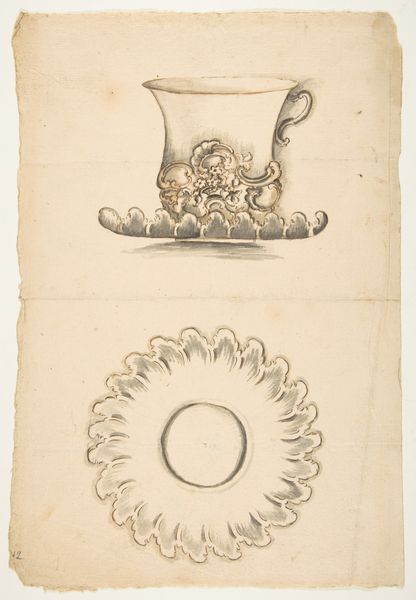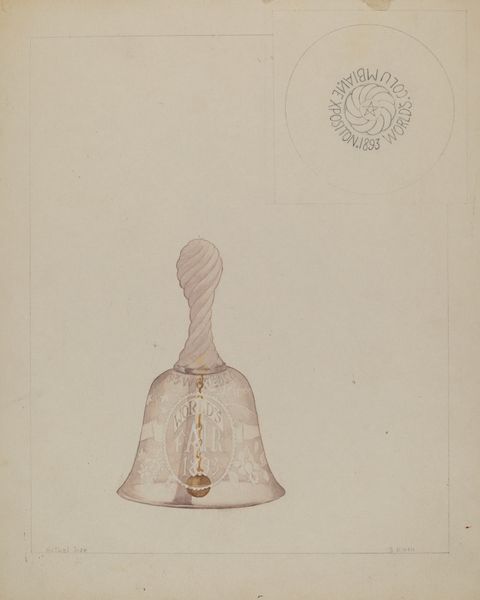
One of Twenty-Three Sheets of Drawings of Glassware (Mirrors, Chandeliers, Goblets, etc.) 1850 - 1880
0:00
0:00
Dimensions: 14 x 19 in. (35.6 x 48.3 cm)
Copyright: Public Domain
Editor: Here we have "One of Twenty-Three Sheets of Drawings of Glassware" by Compagnia di Venezia e Murano, dating from between 1850 and 1880. It’s a watercolor drawing that presents what seems like a design for a glass bottle. The blue details against the cream paper give it a delicate, almost ephemeral quality. What do you see in this piece? Curator: What immediately strikes me is that this seemingly simple design reveals a complex interplay of tradition, class and commerce in 19th-century Venice. These glassware designs weren't merely decorative; they represented a struggle for cultural dominance. Murano glass, while celebrated, also faced competition and societal pressures. This drawing encapsulates how artisans had to negotiate aristocratic tastes (“Bottiglia for il servizio Letter C” suggests an upper-class client), compete in the marketplace (“Bottle for Water/Wine. F. 18/15.” Indicates prices) and still innovate. Can you see how it subtly embodies this intersection of artistry, economy, and social hierarchy? Editor: I hadn’t really considered the commercial aspect. So, the design itself isn't just an aesthetic choice, it’s a statement about access and affordability? Curator: Exactly. And consider the act of drawing itself. It's not just about recording an idea; it’s about communicating value. Who had access to these luxurious items and whose labor made them possible? This artwork opens the door to broader questions about Venetian society, labor relations and global trade networks of the time. How does thinking about this design in those terms change your view of it? Editor: It makes it so much richer. I initially just saw a pretty drawing, but now I understand how it reflects the social and economic currents of its time. Thanks for making me look deeper! Curator: Precisely, let’s challenge traditional art history to make art speak to broader social contexts, allowing it to reveal hidden stories of identity, labor, and power.
Comments
No comments
Be the first to comment and join the conversation on the ultimate creative platform.
